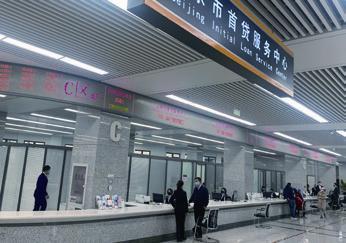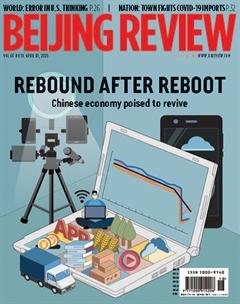China Ramps up Stimulus to Bolster Economy

China lowered the market-based benchmark lending rate on April 20, another sign that the country is determined to channel funds into the real economy via a more fl exible monetary policy, analysts said.
The one-year loan prime rate (LPR) was cut 20 basis points from a month earlier to 3.85 percent, while the above-five-year LPR was reduced 10 basis points from the previous reading to 4.65 percent, according to the National Interbank Funding Center run by the Peoples Bank of China (PBC), the central bank.
The reduction is in line with market expectations, as a key meeting on April 17 decided to guide market interest rates lower as part of a broader policy package to cushion against the economic fallout of the novel coronavirus disease (COVID-19).
The differentiated cut in the one-year and above-fi ve-year LPRs demonstrates Chinas resolve to offer targeted monetary support for the real economy, Wen Bin, a chief researcher with China Minsheng Bank, said.
Rather than resorting to massive stimulus plans to shore up an economy faced with unprecedented challenges, China has vowed to take targeted and accurate measures to help fi rms tide over the diffi cult period.
To support the real economy, especially medium-sized, small and micro enterprises, China will step up the use of tools including reserve requirement ratio cuts, interest rate cuts and reloans, according to the meeting of the Political Bureau of the Communist Party of China (CPC) Central Committee on April 17.
Including the reduction on April 20, Chinas one-year LPR has dropped by a total of 40 basis points since last August when the country unveiled a key reform to use the LPR to better reflect market changes and steer borrowing costs lower to support the real economy.
The measures have been effective in boosting market liquidity. In the first quarter, new yuan-denominated loans hit 7.1 trillion yuan($1 trillion), the highest quarterly level so far, the PBC said, adding that the credit structure has been optimized and credit support is becoming more targeted and effective.
Yet, the PBCs current approach is more moderate and measured than the U.S. Federal Reserves latest bold moves such as steep rate cuts and quantitative easing, Ren Zeping, chief economist of Chinese property developer Evergrande, said.
The “ammunition” in Chinas monetary policy toolbox is suffi cient, Ming Ming, an analyst with CITIC Securities, said, noting that with improved structural tools, intensified financial regulation and optimized capital fl ow, a deluge of strong stimulus policies similar to those during the 2008 global fi nancial crisis may not be needed.
Ping An Securities analyst Zhang Ming said the Chinese Government has stepped up its deleveraging campaign to defuse financial risks since 2016, and it will refrain from issuing a massive monetary and credit stimulus package.
China will also lean on fi scal stimulus to spur infrastructure investment and consumption, as stimulating domestic demand will play the main role in pumping up the economy, analysts said.
The meeting on April 17 called for more proactive fiscal measures with deficit spending such as issuing special government bonds to support the virus fight and increasing the issuance of local government bonds as well as raising the effi ciency of capital utilization to help stabilize the economy.
Emphasizing the need to expand domestic demand, the meeting stressed the necessity to release the potential of consumption by stimulating consumer spending and increasing public spending as appropriate. It is also imperative to expand investment by way of renovating old and dilapidated residential areas, strengthening investment in traditional and new infrastructure to advance the upgrading of traditional industries, and boosting investment in emerging strategic industries.
Local government initiatives to roll out voucher programs, ensure employment and cut taxes and fees could help households and businesses tide over difficulties, prop up domestic demand and keep the economic fundamentals steady, according to Zhang Bin, a senior researcher at China Finance 40 Forum.
According to the World Economic Outlook report recently released by the International Monetary Fund (IMF), China is expected to be one of the few major economies that could see economic expansion this year. The global economy is expected to decline by 3 percent in 2020.
Domestic activity is expected to rebound and continue to recover in the second half of this year as the containment measures are withdrawn and policy support gains strength, Kenneth Kang, Deputy Director of the Asia and Pacifi c Department at the IMF, said.

